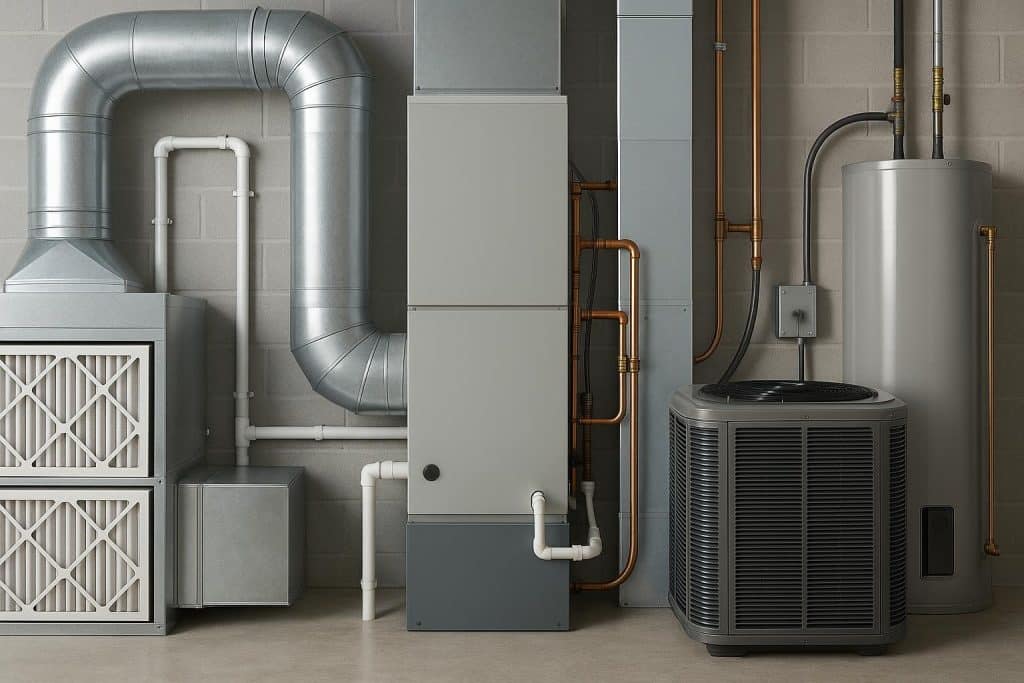Installing an HVAC system is far more than connecting ducts and switches—it’s a process that demands precision, coordination, and deep technical understanding. Complex system installations, especially in larger homes, offices, or industrial spaces, require thoughtful planning and hands-on problem-solving to ensure performance, comfort, and efficiency. Each phase, from design to testing, must be carefully executed to avoid costly errors or performance issues down the line. We will explore how a skilled HVAC contractor approaches each step of a complex installation, ensuring every component works harmoniously to deliver long-lasting, energy-efficient results.
The Step-by-Step Approach to Managing Complex HVAC Installations
1. Conducting a Comprehensive Site Assessment
Before a single piece of equipment is installed, a skilled HVAC contractor such as Hancock Refrigeration Heating & Air Conditioning begins with a detailed site evaluation. This stage sets the foundation for the entire project. The contractor examines the building’s structure, layout, insulation, and existing ductwork (if any) to determine how the new system will integrate with the environment. Factors such as local climate, energy usage, and building occupancy are analyzed to tailor the design for maximum efficiency. Load calculations are performed using industry standards to determine the correct size and capacity of the HVAC units. A system that’s too large or too small can lead to inefficiencies, uneven temperatures, and higher operating costs. This careful assessment ensures that the installation is built to handle the space’s unique requirements, providing comfort and efficiency from day one.
2. Designing a Custom System Blueprint
Once the assessment is complete, the next step is creating a detailed design plan. A skilled contractor doesn’t rely on generic templates; they craft a customized layout that accounts for air distribution, zoning requirements, and equipment placement. The design process involves selecting the most efficient type of system—such as split systems, rooftop units, or variable refrigerant flow (VRF) systems—depending on the building’s purpose and structure. Duct routes are mapped to minimize energy loss and ensure balanced airflow.
Electrical and plumbing connections are also planned to support system performance and accessibility for future maintenance. This blueprint acts as a roadmap for the installation crew, guiding every action and ensuring all components—from thermostats to compressors—are precisely placed. By focusing on design accuracy, the contractor sets the stage for an installation that operates smoothly and efficiently for years to come.
3. Coordinating Installation with Precision and Safety
The actual installation phase is where planning meets execution. Skilled HVAC contractors manage this process with meticulous attention to timing, safety, and technical detail. They coordinate with electricians, plumbers, and builders to ensure that all systems align perfectly and comply with building codes. During this stage, contractors install air handlers, condensers, ductwork, and refrigerant lines while maintaining clean and organized work areas.
Each connection is checked for accuracy, and the system is assembled following manufacturer’s specifications. Safety protocols are strictly followed to prevent electrical hazards, refrigerant leaks, or mechanical malfunctions. In commercial settings, multiple units or zones may need to be integrated, requiring careful calibration to balance load distribution. This level of precision not only ensures the system’s performance but also minimizes disruptions for building occupants during installation.
4. Integrating Smart Controls and Energy Efficiency Features
Today’s HVAC systems are more advanced than ever, often featuring smart controls, zoning capabilities, and energy management tools. A skilled contractor doesn’t just install hardware—they also integrate intelligent technologies that optimize performance. Programmable thermostats, variable speed motors, and advanced sensors are set up to provide real-time temperature control and monitoring. These systems can adjust airflow and power usage based on occupancy patterns, significantly improving energy efficiency.
Contractors may also recommend eco-friendly refrigerants or energy recovery ventilators to further enhance sustainability. Additionally, they ensure that the building’s insulation and air sealing complement the HVAC design for maximum effectiveness. By combining mechanical systems with digital automation, contractors create a seamless balance between comfort, cost savings, and environmental responsibility. This modern approach transforms a standard installation into an intelligent climate management system.
5. Performing Rigorous Testing and Final System Calibration
Once installation is complete, the final phase is testing and calibration—a step that determines whether all the planning and hard work pay off. Contractors run comprehensive system checks to verify that every component functions properly. Airflow rates, temperature differentials, and refrigerant pressures are measured and adjusted as needed. The contractor ensures that thermostats communicate effectively with all zones, preventing inconsistencies in heating and cooling.
Any unusual noises, vibrations, or inefficiencies are diagnosed and corrected before final handover. Documentation is reviewed to confirm compliance with local regulations and manufacturer guidelines. The contractor then provides system orientation to the client, explaining maintenance schedules, filter replacements, and operational settings. This ensures that the building owner understands how to keep the system running efficiently. The final calibration not only guarantees immediate comfort but also extends the life of the HVAC equipment through optimal performance.
Complex HVAC installations demand a structured process, technical mastery, and an eye for detail. From the initial site assessment to long-term maintenance, each stage is carefully executed to ensure comfort, safety, and energy efficiency. A skilled HVAC contractor handles these intricate projects with precision—balancing design, performance, and sustainability. Their ability to merge technology with craftsmanship ensures that every installation not only meets immediate heating and cooling needs but also adapts to future demands. Through careful planning and ongoing care, the contractor delivers systems that stand the test of time, creating environments where efficiency and comfort coexist seamlessly.
